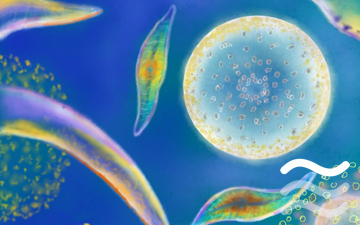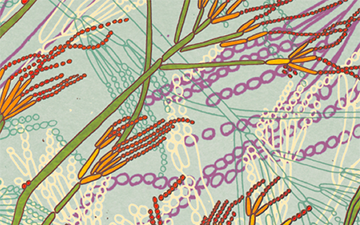Microbe Collection
Ongoing – (See Cards)…
This set simply aims to collect “microorganisms” as loosely as defined as those species that are multicellular, singled cell or smaller (essentially SCALE value of 3 or less). Given the incredible diversity and abundance of species in this category, the Phylo project is hopeful that this collection will grow to represent this important part of biodiversity.

Pseudomonas denitrificans
Bacteria
These bacteria make vitamins that we can eat to be healthy and grow.

Leishmania
Leishmania colombiensis


5 POINTS
El Movimiento: 1
Juego: Debe jugarse junto al Jején (Lutzomyia longipalpis) o junto a un animal al que infecte y le quita dos puntos de valor en el juego.
Dato: L. colombiensis es transmitida por la picadura de un Jején infectado.

Roya
Hemileia vastatrix


5 POINTS
El Movimiento: 2
Juego: Este hongo causa enfermedades en plantas (fitopatógeno). Se juega junto a una planta y le quita un punto de valor en el juego.
Dato: Hemileia vastatrix causa la Roya del café. La peor epidemia de Roya en Colombia se dio en los años 80.

Phytoplankton
Multiple Orders


2 POINTS
PLAY: Phytoplankton has a MOVE of 1
FACT: Phytoplankton are the main source of food for almost all fish.

Penicillium
Penicillium chrysogenum


2 POINTS
Fact: The antibiotic, Penicillin G, is derived from this species of fungus.

Thecamoeba
Amoeba genus


7 POINTS
Play: Thecamoeba has a MOVE of 2, and is considered an HETEROTROPH.
Fact: Amoebas are often defined as unicellular organisms with no defined shape.